This article was medically reviewed by Luba Lee, FNP-BC, MS and by wikiHow staff writer, Janice Tieperman. Luba Lee, FNP-BC is a Board-Certified Family Nurse Practitioner (FNP) and educator in Tennessee with over a decade of clinical experience. Luba has certifications in Pediatric Advanced Life Support (PALS), Emergency Medicine, Advanced Cardiac Life Support (ACLS), Team Building, and Critical Care Nursing. She received her Master of Science in Nursing (MSN) from the University of Tennessee in 2006.
There are 27 references cited in this article, which can be found at the bottom of the page.
This article has been viewed 13,436 times.
Eating healthy can seem like a complicated task, but it’s not as tricky as you may think. With some careful research and food shopping, you can choose nutritious, filling meals and snacks without going on a diet. When you’re eating a meal or a snack, focus on serving yourself controlled, manageable portions. With perseverance, good habits, and a long-term goal, you may see positive changes in your physical health without going on a diet!
Steps
Choosing Nutritious Foods
-
1Eat breakfast on a daily basis to boost your metabolism. Start your morning with a filling, nutritious meal like a protein shake with a piece of fruit or a bowl of high-fiber cereal. When you eat breakfast consistently, you might notice a positive change in your BMI. When planning your meal, go for low-fat foods with a lot of calcium and fiber, which are great for you.[1]
- When you eat a well-rounded breakfast, you’re more likely to eat your daily recommended serving of fruits and vegetables.
- Low-fat yogurt, nonfat milk, and cheese are great sources of calcium.[2]
- Whole grains like bran and oatmeal are great sources of fiber that you can add to your breakfast. Fruits with skin, like raspberries, apples, and pears, also have fiber.[3]
- For a satisfying and nutritious breakfast, try having flaxseed meal, chia seeds, and berries.
-
2Enrich your diet with high-quality lean animal and plant-based proteins. Choose a variety of protein-rich snacks and dishes to enrich your everyday meals. Fill your diet with lean meats, like turkey, chicken and fish. If you’re looking for a vegetarian protein source, opt for beans and legumes, along with seeds and nuts.[4] If you’d prefer to eat red meat, choose a section of meat that’s labeled “grass-fed” or “lean.”[5]
- Red meats tend to be a lot less healthy than leaner options, like chicken and turkey. Look for organic options to ensure that you’re getting high-quality, healthy meats.
- Fish contain a lot of omega-3 fatty acids, which help lower your risk of long-term heart issues. To reap the full benefits of fish, try to eat two, 99 g (3.5 oz)servings of fish each week.[6] In general, wild-caught fish are healthier and contain fewer contaminants than farm-raised fish.[7]
Did you know? Mackerel, sardines, salmon, and herring are especially high in omega-3 fatty acids.
Advertisement -
3Select foods and drinks with a lot of fiber. Optimize your digestive tract by eating or drinking at least 20 grams (0.71 oz) of dietary fiber each day. Look for snacks and beverages with whole grains, or eat a serving of legumes, fruits, and vegetables. When you eat a consistent amount of fiber, you might notice a positive change in your bathroom schedule.[8]
- Women should have at least 21–25 grams (0.74–0.88 oz) of fiber each day, while men should have 30–38 grams (1.1–1.3 oz).
- Dietary fiber helps satisfy your appetite, which can prevent overeating and unnecessary weight gain.
- Fiber naturally lowers your cholesterol, and also helps balance any blood sugar issues.
- Beets are a great high-fiber food. You can also get plenty of healthy fiber and nutrients from vegetable smoothies.
-
4Opt for whole grains instead of refined grains. Add iron, copper, magnesium, and several B vitamins by eating whole grains. Instead of refined and processed grains, opt for food items like barley, brown rice, oats, rye, millet, and amaranth. In any grain product, check the ingredients label to make sure that a whole grain is first on the list.[9]
- Whole grains are a great source of fiber.
- If you eat whole grains on a consistent basis, you’re at a lower risk of developing type-2 diabetes, colorectal cancer, or heart disease.
- If you experience symptoms such as abdominal pains, bloating, or belching when you eat these foods, it’s possible that you have a sensitivity to gluten. Not all grains contain gluten, so if your doctor confirms a gluten sensitivity, ask them which whole grains you can safely eat.[10]
-
5Read the nutrition facts before purchasing and eating new foods. Check the side or back of a food package to find the nutrition label, which contains the calorie, fat, cholesterol, sodium, protein, and carbohydrate content of an item. As a rule of thumb, try to avoid foods and beverages with trans fats and excessive saturated fat. Additionally, keep an eye out for the Daily Value (DV) percentage, which tells you how much of each nutrient that you’re consuming.[11]
- Monounsaturated and polyunsaturated fats are good for you, and help reduce the bad cholesterol in your body.[12]
- The bottom half of the nutrition label shows the different nutrients in your food or beverage, as well as the ingredients.
- Overall, saturated fat should only count for about 5-6% of your daily calorie intake. If you eat around 2,000 calories each day, aim to eat about 13 grams (0.46 oz) of saturated fat each day.[13]
- DV percentages are usually based on a general recommendation, like 2,000 calories. If a nutrient is harmful in excess, like saturated fat or sodium, aim to eat less than 100% of its DV. If a nutrient is helpful to your body, like dietary fiber or calcium, aim to eat at least 100% of its recommended DV.[14]
-
6Cut sugary drinks out your diet. Try to limit the amount of soda, energy drinks, juice, sports drinks, and other sweetened beverages that you drink on a regular basis. Instead, choose water as your drink of choice. If you drink too many sugary drinks, you might raise your chances of Type-2 diabetes.[15]
- While you don’t have to remove sugar from your diet completely, look for ways you can limit it in your daily life. For instance, try using 1 spoonful of sugar in your coffee instead of 2-3.
-
7Swap unhealthy foods for a healthier counterpart. Examine the different ingredients and foods in your life and see if there are any adjustments you can make. If you’re a fan of palm oil, try using olive or coconut oil instead. If you’re shopping for canned fruit, look for produce that’s packaged in juice instead of syrup.[16]
- Try making your own salad dressing at home!
- Canola oil contains healthy fats and omega-3 fatty acids, but the production of canola oil typically involves a lot of processing that may reduce some of its healthy benefits. Look for high-quality cold-pressed oils (which may be labeled “cold-pressed,” “unrefined,” or “virgin”) if you want a healthier, less processed alternative.[17]
- Coconut oil is high in healthy fats and works well as a cooking oil due to its high heat index. However, it also contains a lot of saturated fat, and eating too much of it can raise your triglycerides and bad cholesterol (LDL) levels. It’s best to use it in moderation.[18]
-
8Talk to your doctor about supplements to help maintain a healthy weight. Some supplements, such as alpha-lipoic acid, CLA, and chromium, have shown promise for helping reduce or maintain weight.[19] These supplements may help by promoting fat loss, building lean muscle mass, or reducing food cravings. Before trying any supplement, ask your doctor if you can take it safely.
- Some supplements may interact with other medications, vitamins, or supplements. Give your doctor a full list of any medications or supplements you are currently taking.
- Let your doctor know if you have any health concerns, such as pregnancy or a chronic health condition, since these can affect which supplements you can take safely.
Managing Your Portions
-
1Follow the recommended serving size whenever you snack. If you’re reaching for potato chips, candy, or another food, use your bowl or plate to control your portions. Before dishing out any food, read the side of the nutrition label to see what a serving of the snack is. Next, scoop that amount onto your plate or bowl. With a smaller portion, you can cut down on a lot of unnecessary calories![20]
- Follow the same principle when pouring yourself a drink. When having milk, juice, or another beverage, read the label on the bottle to see what the serving size is.
-
2Serve yourself a smaller portion of food during mealtime. Double-check your portions before arranging any food on your plate. When serving meat, give yourself a piece that’s the same size as a deck of cards. If you’re snacking on some produce, note that a small piece of fruit or a slice of melon count as 1 serving, while large apples can count for 2 servings.[21]
- The serving size for liquid dairy, like milk and yogurt, is 1 cup (240 mL).
- When eating grains, remember than 1 slice of bread, or 50 grams (1.8 oz), or ½ cup (100 g) of cooked pasta counts as 1 serving.
-
3Place junk food on red plates to prevent overeating. Play a small mind game with yourself to lower your snack portions. Since the brain associates red with the concept of “stop,” you may feel less inclined to eat when placing your snacks on a red plate or bowl. When eating healthy food, place your food on a green plate, which sparks the opposite reaction in your mind.
- This kind of color theory can also apply to the wall color of your dining and living spaces. For instance, you could have your kitchen or dining area painted in green, while your living room or bedroom is painted in a shade of red.
-
4Monitor your calorie intake each day overall. While you don’t have to be a calorie counter, try to form a ballpark estimate about how many calories you take in each day. On an average day, note that adult women need about 1,600 to 2,400 calories, while adult men need 2,000 to 3,000. Whenever you have a meal or snack, take note of how many calories you’ve had so far. While calorie ranges aren’t set in stone, they can help you live a more balanced lifestyle.[22]
- Talk to your doctor to get an idea of how many calories you should be consuming each day.
Practicing Good Habits Throughout the Day
-
1Chew slowly and carefully whenever you eat. Don’t rush yourself while you’re enjoying a meal or snack. Instead, give yourself plenty of time to thoroughly chew and swallow your food. If you eat too quickly, there’s a chance that you could overeat.[23]
- People who eat quickly are more likely to be overweight than individuals who eat at a slower pace.
-
2Drink at least 11 1⁄2 cups (2.7 L) of water each day. Throughout the day, try to drink several glasses of water. When your body is well-hydrated, you’re more likely to have a consistent temperature. With this in mind, try to drink multiple glasses of water each day.[24]
- Men should drink about 15 1⁄2 cups (3.7 L) of water each day, while women should drink 11 1⁄2 cups (2.7 L).
- Always drink water before, during, and after you exercise.
- Your body operates more efficiently when it maintains a stable temperature.
-
3Avoid using electronics while you eat. Whether snacking or eating a meal, try to eat or drink in an undistracted environment. If you’re watching TV or looking at your phone while snacking, you might end up overeating and consuming an unnecessary amount of calories.[25]
- Try enjoying a snack or meal with a friend or family member, but be careful! Research shows that people tend to overeat more when they’re eating with company.[26]
-
4Get 7-9 hours of sleep to keep a normal appetite. Try to get a good night’s sleep, so your body can calibrate itself in the morning. If you don’t get enough sleep, your appetite increases sharply, which can lead to overeating. Instead, try developing a set bedtime, so you can sleep a consistent amount of time each night.[27]
-
5Prepare meals at your home instead of eating out. While restaurants may seem more convenient, you can save yourself a lot of calories by cooking at home. In your own kitchen, you have control of the ingredients and nutrients that go into your food, which can create a healthier meal overall. By using your own ingredients and recipes, you can save hundreds of calories in unwanted fat and sodium.[28]
- For instance, a homemade hamburger is about 300 calories less than a fast food burger.
-
6Try intermittent fasting to build a healthier eating schedule. Intermittent fasting involves eating all of your meals during a restricted timeframe during the day—e.g., between 7 AM and 3 PM. Use intermittent fasting in combination with exercise and a balanced, nutritious diet in order to gain all of the potential benefits.[29]
- Studies show that eating on an intermittent fasting schedule can lower your blood pressure and help regulate your insulin levels. People on an intermittent fasting diet also report overall reductions in their appetite.
- If you choose to try intermittent fasting, avoid snacking between meals and after your designated cutoff time so that your body has time to burn fat.
References
- ↑ https://www.rush.edu/health-wellness/discover-health/why-you-should-eat-breakfast
- ↑ https://www.helpguide.org/articles/healthy-eating/calcium-and-bone-health.htm
- ↑ https://www.mayoclinic.org/healthy-lifestyle/nutrition-and-healthy-eating/in-depth/high-fiber-foods/art-20050948
- ↑ Tara Coleman. Clinical Nutritionist. Expert Interview. 22 October 2020.
- ↑ https://www.heart.org/en/healthy-living/healthy-eating/eat-smart/nutrition-basics/how-to-eat-healthy-without-dieting
- ↑ https://www.heart.org/en/healthy-living/healthy-eating/eat-smart/fats/fish-and-omega-3-fatty-acids
- ↑ https://chhs.source.colostate.edu/wild-caught-vs-farm-raised-seafood/
- ↑ https://www.mayoclinic.org/healthy-lifestyle/nutrition-and-healthy-eating/in-depth/fiber/art-20043983
- ↑ https://www.hsph.harvard.edu/nutritionsource/what-should-you-eat/whole-grains/
- ↑ https://www.mayoclinic.org/healthy-lifestyle/nutrition-and-healthy-eating/in-depth/gluten-free-diet/art-20048530
- ↑ https://www.heart.org/en/healthy-living/healthy-eating/eat-smart/nutrition-basics/how-to-eat-healthy-without-dieting
- ↑ https://www.heart.org/en/healthy-living/healthy-eating/eat-smart/fats/the-facts-on-fats
- ↑ https://www.heart.org/en/healthy-living/healthy-eating/eat-smart/fats/saturated-fats
- ↑ https://www.fda.gov/food/nutrition-education-resources-materials/how-understand-and-use-nutrition-facts-label
- ↑ https://www.bphc.org/whatwedo/healthy-eating-active-living/sugar-smarts/be-sugar-smart/Pages/Health-Effects-of-Sugary-Drinks.aspx
- ↑ https://www.heart.org/en/healthy-living/healthy-eating/eat-smart/nutrition-basics/healthy-swaps-for-common-foods
- ↑ https://www.hsph.harvard.edu/nutritionsource/2015/04/13/ask-the-expert-concerns-about-canola-oil/
- ↑ https://www.hsph.harvard.edu/nutritionsource/food-features/coconut-oil/
- ↑ https://ods.od.nih.gov/factsheets/WeightLoss-HealthProfessional/
- ↑ https://www.uofmhealth.org/health-library/av2453
- ↑ https://www.heart.org/en/healthy-living/healthy-eating/eat-smart/nutrition-basics/portion-size-versus-serving-size
- ↑ https://www.heart.org/en/healthy-living/healthy-eating/eat-smart/nutrition-basics/portion-size-versus-serving-size
- ↑ https://www.forbes.com/sites/alicegwalton/2018/02/12/eating-slowly-and-mindfully-may-help-with-weight-loss-study-finds/
- ↑ https://www.mayoclinic.org/healthy-lifestyle/nutrition-and-healthy-eating/in-depth/water/art-20044256
- ↑ https://www.health.harvard.edu/blog/distracted-eating-may-add-to-weight-gain-201303296037
- ↑ https://digest.bps.org.uk/2019/10/28/heres-why-we-eat-more-when-were-with-friends-and-family/
- ↑ https://www.sleepfoundation.org/articles/connection-between-sleep-and-overeating
- ↑ https://www.obesityaction.org/community/article-library/eating-out-vs-eating-at-home/
- ↑ https://www.health.harvard.edu/blog/intermittent-fasting-surprising-update-2018062914156
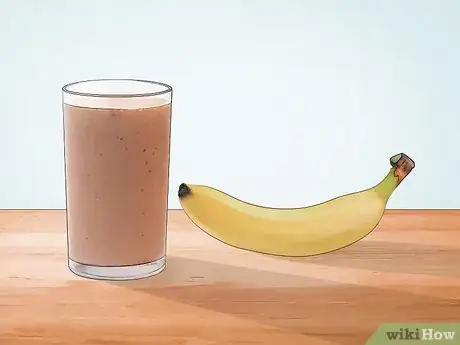



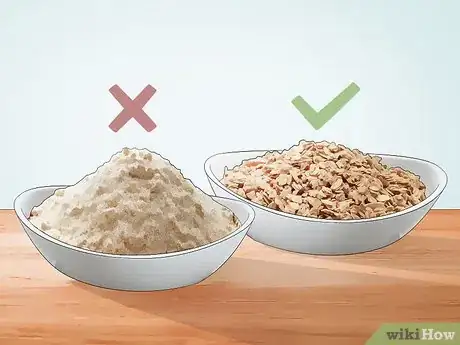

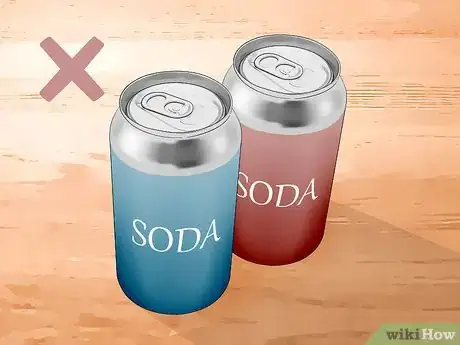
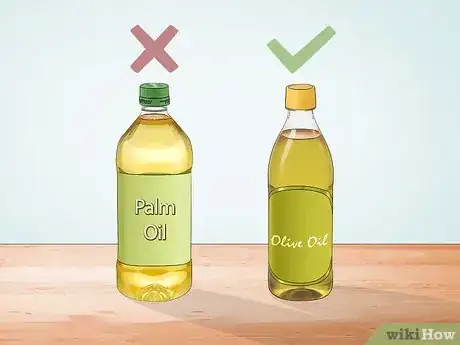

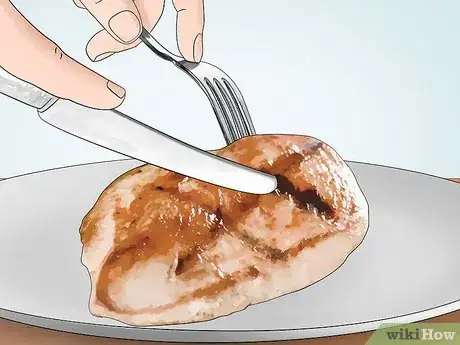
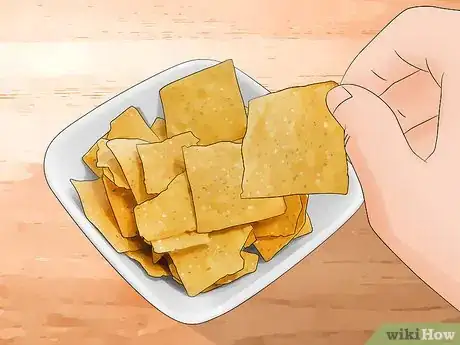
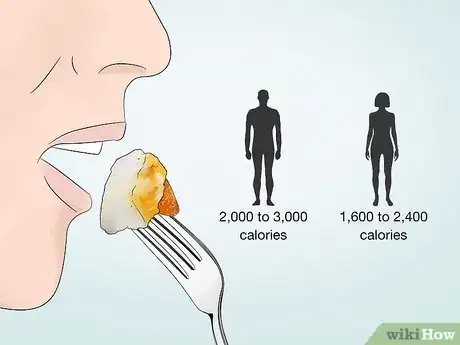
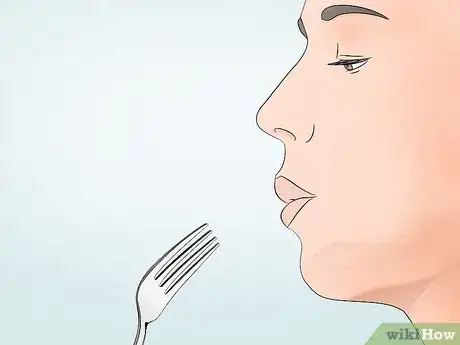
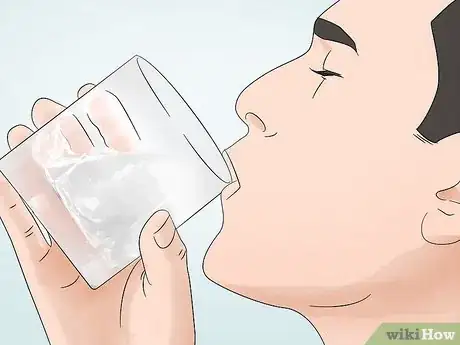
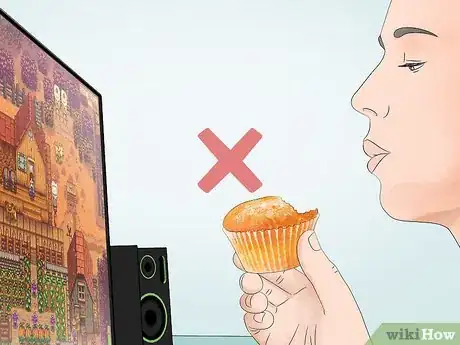
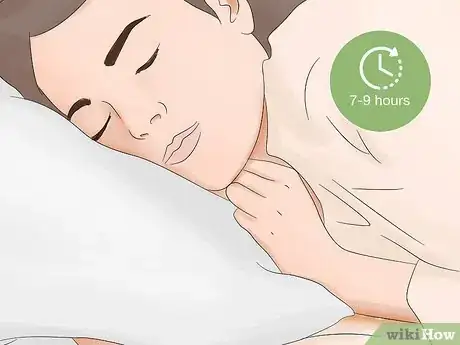


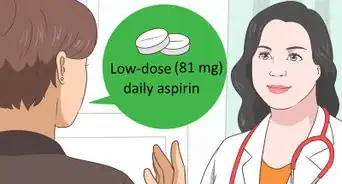

























































Medical Disclaimer
The content of this article is not intended to be a substitute for professional medical advice, examination, diagnosis, or treatment. You should always contact your doctor or other qualified healthcare professional before starting, changing, or stopping any kind of health treatment.
Read More...